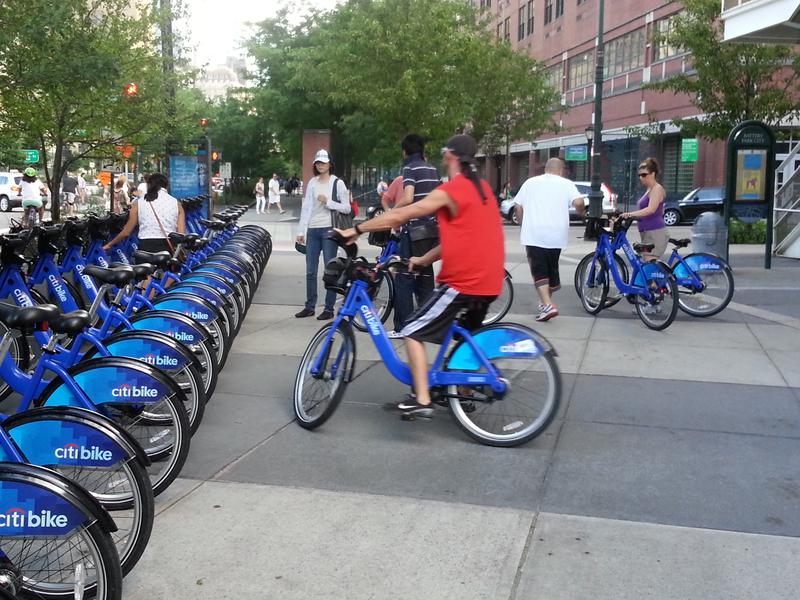 Transportation Nation
Transportation Nation
Citi Bike's First Five Months: Zero Deaths, 93,000+ Members

Citi Bike's tens of thousands of annual members have ridden nearly 10 million miles in five months -- without a fatality.
That's according to the New York City Department of Transportation, which is touting its street safety record in a newly released report.
"Since 2000," states the DOT in one section, "there has been a 72% decrease in the average risk of serious injury experienced by cyclists in NYC, while the number of trips by bike has nearly tripled."
And that's with larger-than-anticipated numbers of bike share users. (The city's initial goal for Citi Bike's first year was to attain 60,000 annual members. According to Citi Bike data, the system had over 93,000 members as of November 1.)
That safety number is a testament to...safety in numbers, according to Paul Steely White, the head of the advocacy group Transportation Alternatives.
"When you triple the number of ambient cyclists in a city," he said, citing public health research, "you tend to at least halve the crash rate."
Over the past decade, NYC has seen a 30% decline in traffic fatalities – the safest years in recorded history. http://t.co/rXytlg2V2L
— NYC DOT (@NYC_DOT) November 5, 2013
White credited the NYC DOT with re-engineering streets and emphasizing safety during the tenure of Transportation Commissioner Janette Sadik-Khan, but added that the city is also experiencing something of a culture shift.
"It could be that drivers are becoming more aware of seeing bicyclists and accept them as a legitimate part of the street network," he said. “When they do view them, they treat them as legitimate road users, not alien outliers.”
Another safety effect of the increase in cycling: the more people that bicycle, the more likely that a car driver is also a cyclist -- giving the person behind the wheel more empathy for the bicyclist riding alongside.
And as opposed to some who feared the impact of thousands of less experienced cyclists on the road (remember the video op-ed of the Wall Street Journal's Dorothy Rabinowitz, who said the "most important danger in the city...is the bicyclist"), White says the slower, upright Citi Bicyclists have rubbed off on other bicyclists.
"They’re riding more slowly, stopping at lights," he said. "It’s more of a civic riding culture, you’re riding more slowly, more predictably.”
But the Citi Bike safety stands in contrast with several recent pedestrian fatalities, including the death of a nine-year old in Brooklyn last weekend struck by a driver who jumped a curb after going the wrong way down a one-way street.
Although traffic fatalities have been on the decline overall, they are almost intersecting with the city's homicide rate. As of the end of September, there were 203 traffic fatalities in the five boroughs -- just 39 fewer than the number of murders in the same period.
White says this points to a need to rethink policing priorities to focus on cars that speed and fail to yield to pedestrians. "We need a sea change at the NYPD," he said. "They must enforce more against reckless driving."
(There's one big reason that enforcement doesn't happen at the rate some advocates would like to see: as TN reported last week, one former city official laid the blame at the feet of ticket revenue. New York City keeps all of the revenue from parking tickets, but splits the proceeds from moving violations with the state.)
But White said the city is at a tipping point.
"Reckless driving is now being stigmatized the way drunk driving was 30 years ago," says White. "All eyes are on the (next ) mayor-elect. Will he task the NYPD with investigating many more serious crashes? Will he task the NYPD with data-driven enforcement policies?"